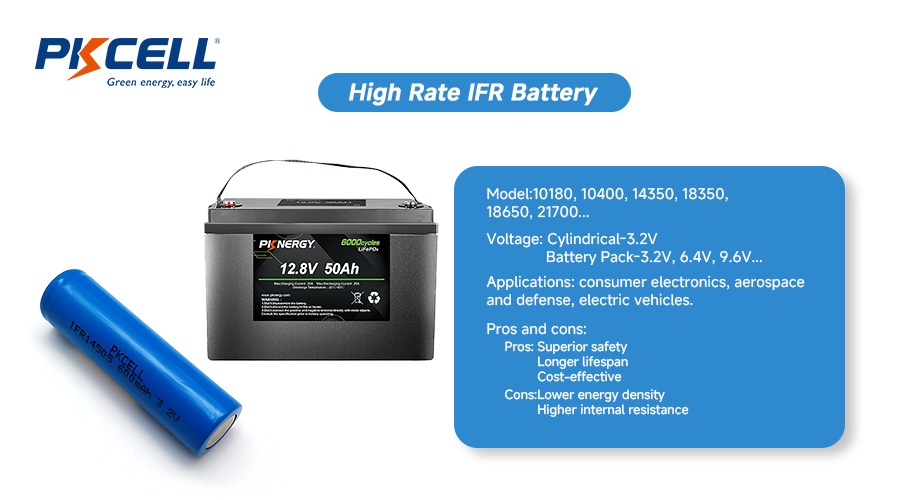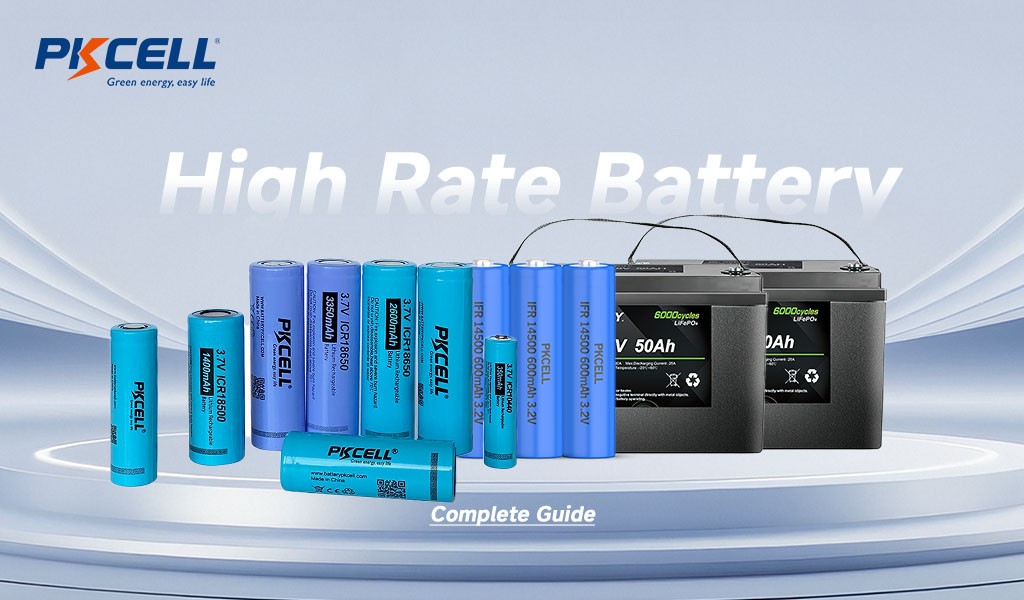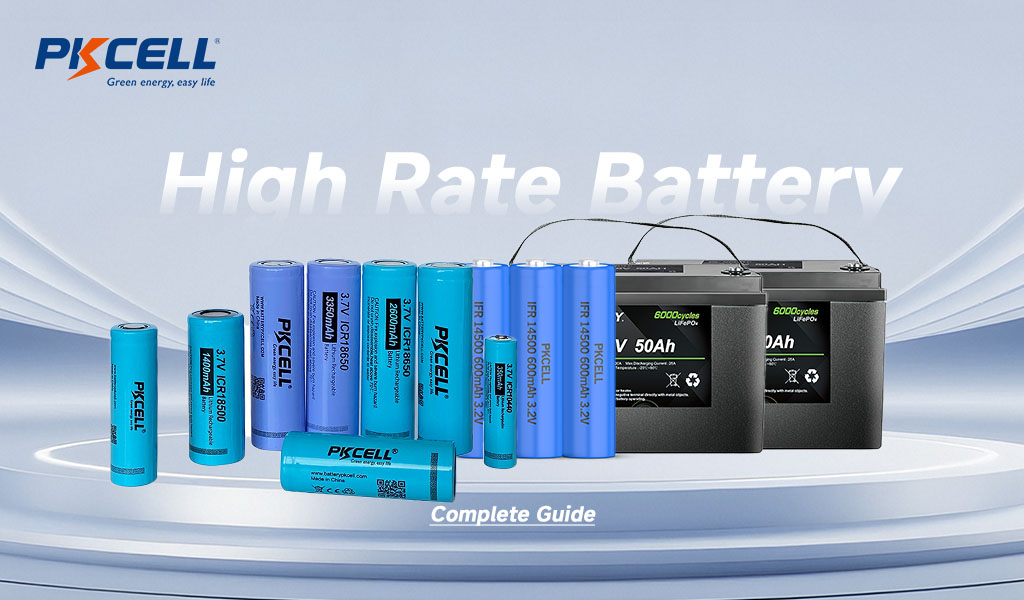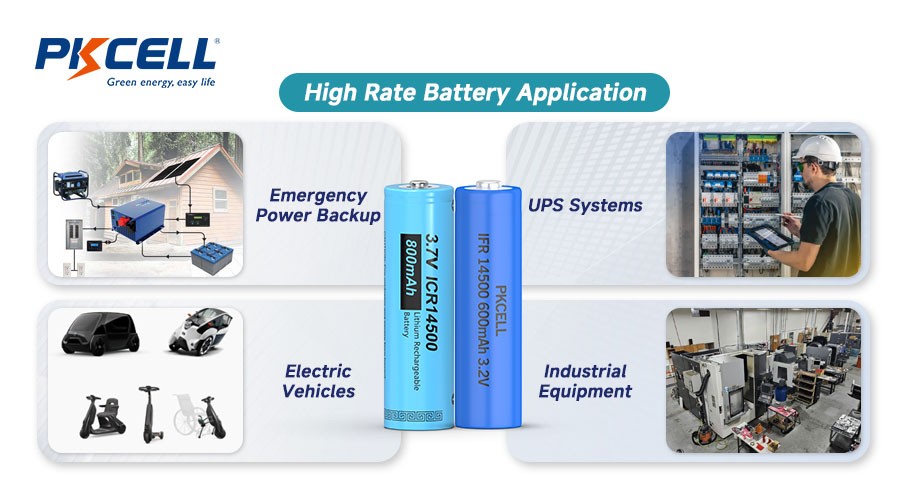Key Highlights
- High rate batteries are designed for superior discharge rates, making them ideal for applications that require rapid energy bursts.
- They deliver high output power, ensuring reliable backup power for critical systems like data centers and medical equipment.
- With advanced construction and internal resistance management, these batteries guarantee consistent performance.
- High rate batteries are commonly used in UPS applications to prevent disruptions during outages.
- Their long service life and efficient charging cater to modern energy demands across diverse industries.
- Whether used in electric vehicles or emergency systems, these batteries handle high current loads with ease.
Introduction
High rate batteries are very important for today’s energy storage systems. They provide help during power cuts and tough tasks. These batteries charge and discharge well. They support vital services like phone lines, data centers, and medical tools. They are great at giving backup power when it is most needed. With smart design, they can manage high current loads. This helps them last longer while performing better. This means they keep working smoothly in many areas. In the next part, we will look more closely at these batteries.
Understanding High Rate Batteries
High rate batteries stand out due to their remarkable ability to deliver powerful bursts of energy in a short time. This incredible feature makes them vital for applications that need a high discharge rate while still maintaining excellent performance.
The internal resistance of these batteries is thoughtfully designed to enable quick energy transfers. This clever engineering not only meets energy demands but also helps to prolong their lifespan. In the following subsections, we’ll explore their key features and contrast them with standard batteries, highlighting their distinct advantages in different situations.
Definition and Core Characteristics
High rate batteries are specifically designed to store energy and provide quick bursts of power, making them truly essential for high-output applications. They do a fantastic job of managing discharge cycles, which ensures that energy transformation is efficient and smooth. Plus, their design is built to handle powerful currents measured in volts and amps, perfectly fitting a variety of needs.
These batteries use thinner electrode plates to enhance the chemical reactions with the electrolyte, resulting in higher energy outputs. The collaboration between the electrodes and the electrolyte guarantees maximum discharge capacity while keeping loss to a minimum over time.
Additionally, high rate batteries have a special internal structure designed to provide consistent high output power. Their clever configurations enable them to reliably fulfill energy needs for essential systems, such as UPS setups and industrial machinery.
Comparison with Standard Batteries
High rate batteries differ significantly from ordinary batteries, particularly in their high discharge capabilities and voltage delivery.
| Aspect | High Rate Battery | Standard Battery |
|---|---|---|
| Discharge Rate | High discharge rate for short durations | Steady discharge over extended periods |
| Application | Emergency systems, UPS, telecoms | Consumer electronics, household use |
| Cycle Life | Optimized for periodic high output | Longer, consistent discharge cycles |
| Construction | Thin lead plates, high material reaction | Regular plate thickness, moderate reaction |
These differences make high rate batteries a preferred choice for applications needing rapid power surges, unlike lead acid batteries commonly used in everyday electronics. Their specialized design optimizes charging efficiency and high power delivery, setting them apart.
Types of High Rate Batteries
There are several types of high rate batteries, with lithium batteries leading the charge. Popular options include lithium-ion and lead acid variations, each tailored to specific applications.
Lithium-ion batteries provide excellent discharge rates and a lightweight design, whereas lead-acid batteries deliver cost-effective performance for stationary applications. In the following sections, we will examine LiFePO4 and LiCoO2 batteries to highlight their distinct advantages; we also offer these two types of products.
High Rate LiFePO4

Lithium iron phosphate batteries, known for their long service life, are ideal high rate options. Their exceptional cycle life ensures durability, supporting applications that rely heavily on continuous energy output.
Renowned for charging efficiency, LiFePO4 batteries reduce downtime, ensuring seamless operation during critical energy demands. They excel in systems requiring consistent output over time, such as emergency setups and robotics.
Additionally, these batteries provide enhanced safety features, minimizing risks in high current environments. Their robust construction allows for versatility across various industries.
High Rate LiCoO2

Lithium-ion batteries employing cobalt oxide (LiCoO2) are tailored for applications needing high discharge capacity. Power tools and portable energy solutions benefit greatly from their high rate performance.
These batteries incorporate effective battery management systems, boosting both reliability and safety. The BMS ensures stability during charging and discharge cycles, preventing operational issues.
Their lightweight, compact design accommodates mobile applications that demand robust energy delivery over short durations, such as drones and jump starters. LiCoO2 batteries provide unmatched energy efficiency.
Applications of High Rate Batteries in the United States
High rate batteries are integral to industries across the United States, addressing energy needs during outages and high-demand scenarios. UPS systems, data centers, and medical devices depend on their reliable backup power capabilities.
From telecommunications to industrial equipment, these batteries handle high current requirements effectively. They offer solutions for both stationary and mobile applications, enhancing operational safety and productivity across sectors.
Use in Emergency Power Backup and UPS Systems
High rate batteries are vital for UPS systems, providing uninterrupted backup power during outages. Common applications include:
- Data center operations, ensuring server continuity during power failures.
- Medical equipment support to prevent operational interruptions in emergencies.
- Telecommunications systems reliant on stable power delivery.
- OEM UPS manufacturers choosing Dynasty high rate series batteries for consistency.
These batteries remain the preferred choice for backup power, offering reliable energy output in critical configurations like security lighting and network servers.
High Rate Batteries in Electric Vehicles and Industrial Equipment
In electric vehicles and industrial setups, high rate batteries serve as powerhouses for high current loads. They are particularly suited for scenarios requiring robust energy in short timeframes.
- High rate batteries enable efficient charging for EVs, extending operational periods.
- Industrial equipment benefits from consistent energy output, minimizing downtime.
- Applications such as autonomous machinery leverage these batteries’ dependable performance.
- Lightweight designs make them compatible with mobile installations.
Their widespread use in industrial equipment showcases their adaptability across demanding environments.
Conclusion
High rate batteries are transforming how we power a wide range of applications, from electric vehicles to emergency backup systems! Their impressive discharge capabilities and innovative construction materials really set them apart from regular batteries, making them an essential choice for high-demand environments. By understanding the different types and key features of high rate batteries, both consumers and businesses can make well-informed decisions that boost performance and reliability. As the need for efficient energy solutions keeps growing, embracing high rate battery technology will play a crucial role in shaping the future of energy storage. If you’re excited to dive deeper into these benefits, don’t hesitate to get quotes for your commercial needs today!
Why Choose PKCELL for High Rate Batteries
Opting for PKCELL for high rate batteries ensures access to products that meet rigorous industry standards. With advanced technology, our batteries deliver high discharge rates and exceptional cycle life, making them ideal for challenging applications like UPS systems and medical equipment. PKCELL’s commitment to quality extends to our innovative battery management systems, optimizing performance and lifespan. Choosing PKCELL means investing in reliable, high output power solutions that consistently perform under high current loads, ensuring backup power when it’s needed most.
Frequently Asked Questions
Are high rate batteries safe for everyday use?
Yes, high rate batteries meet rigorous industry standards for safety. Equipped with advanced battery management systems (BMS), they prevent overheating and instability, making them ideal for daily applications and high-demand scenarios.
Can high rate batteries be recycled or disposed of safely?
High rate batteries, including lead acid and lithium ion types, can be recycled through specialized facilities. Proper disposal ensures environmental safety, highlighting their sustainable credentials for various industries.
Post time: Jun-09-2025





